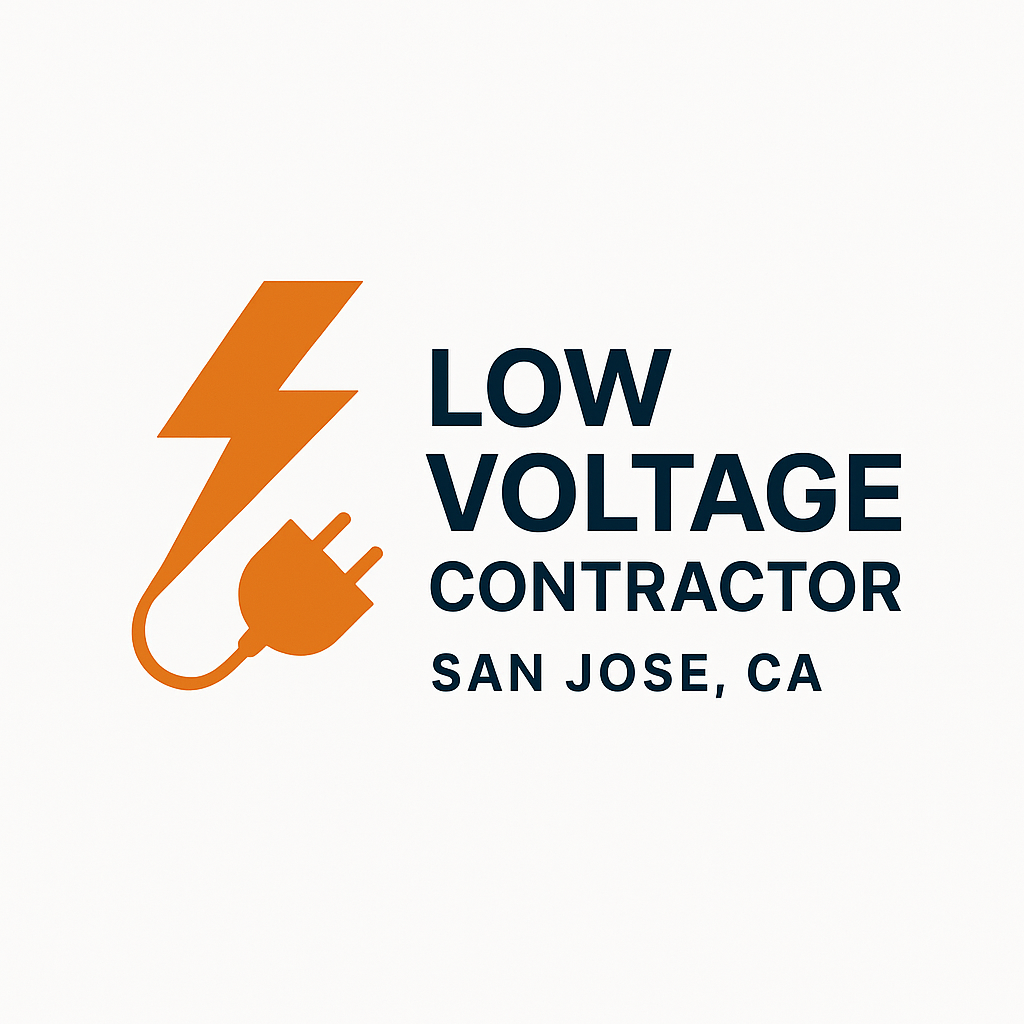Low Voltage Solutions for San Jose High-Rises and Multi-Tenant Buildings
Managing or developing a high-rise or multi-tenant property in San Jose comes with unique challenges especially when it comes to electrical, networking, and security systems. From ensuring reliable internet connectivity to maintaining life safety systems, low voltage solutions are at the core of modern building infrastructure.
This guide explains how low voltage systems work, why they are critical in high-density properties, and how property managers and developers in San Jose can ensure code compliance and long-term reliability.
What Are Low Voltage Systems?
Defining Low Voltage
- NEC (National Electrical Code): Typically under 50 volts for power-limited circuits (Article 725).
- Common Applications: Security cameras, fire alarms, access control, intercoms, structured cabling, and smart building systems.
- Safety Advantage: Reduced risk compared to high-voltage systems, though still subject to strict installation standards.
Low Voltage vs. High Voltage in Multi-Tenant Buildings
- Low Voltage: Used for communication, safety, and convenience systems.
- High Voltage: Powers elevators, HVAC systems, and lighting infrastructure.
- Integration: Both must coexist safely with clear separation as required by NEC.
H2: Why Low Voltage Solutions Matter for San Jose High-Rises
H3: Safety and NEC Compliance
- San Jose follows the California Electrical Code, based on NEC.
- Critical systems such as fire alarms and emergency communication rely on Class 2 circuits for safe operation.
Energy Efficiency and Sustainability
- Low voltage systems consume less power and integrate seamlessly with green building certifications like LEED.
- Ideal for smart energy management in multi-tenant properties.
Tenant Expectations in 2025 and Beyond
- High-speed internet and secure access systems are now baseline requirements for tenants.
- Reliable low voltage infrastructure directly impacts tenant satisfaction and retention.
H2: Essential Low Voltage Solutions for Multi-Tenant Properties
Security and Access Control
- CCTV Systems: NEC Article 725-compliant Class 2 circuits.
- Access Control: Key cards, biometrics, and mobile credentials.
- Integration: Centralized monitoring for multiple tenant floors.
Structured Cabling & Networking
- CAT6/CAT6A Cabling: For high-speed internet and VoIP.
- Fiber Optics: Essential for large high-rises with hundreds of tenants.
- Future-Proofing: Scalable networks designed for 5G and IoT readiness.
Life Safety and Fire Alarm Systems
- Fire Alarms: NEC Article 760 compliance required.
- Mass Notification Systems: Enable quick communication across multiple units.
- Backup Power: Battery and generator integration for emergencies.
Intercom and Communication Systems
- Video Intercoms: For visitor management.
- Tenant-to-Tenant Communication: Improves security and convenience.
- Integration with Mobile Apps: Smart entry and monitoring capabilities.
Audio-Visual and Building Automation
- Conference Room AV: For shared office spaces within multi-tenant towers.
- Smart Lighting and HVAC Controls: Enhance energy efficiency.
- IoT Devices: Connect sensors, cameras, and automation tools into one ecosystem.
Best Practices for San Jose Property Managers and Developers
Plan for Scalability
- Design infrastructure with future tenant demand in mind.
- Use modular cabling and adaptable server rooms.
Ensure NEC and Local Code Compliance
- Follow NEC Articles 725, 760, and 800 for low voltage systems.
- Work with licensed low-voltage contractors in San Jose to ensure inspections pass.
Prioritize Cybersecurity in Low Voltage Systems
- Encrypt data in IP-based security systems.
- Secure Wi-Fi and wired connections across tenant units.
Partner with Experienced Low Voltage Contractors
- Certified installers understand California amendments to NEC.
- Prevents costly failed inspections and insurance issues.
Common Mistakes in High-Rise Low Voltage Installations
Overlooking Separation Requirements
- NEC prohibits combining high and low voltage wiring in the same conduit unless rated.
Ignoring Bandwidth Growth
- Tenants’ data demands increase yearly; failure to future-proof networks leads to bottlenecks.
Using Unlicensed Contractors
- Non-compliance risks failed inspections and insurance coverage denial.
Conclusion & Key Takeaways
- Low voltage systems are the backbone of safety, connectivity, and tenant satisfaction in San Jose high-rises.
- Compliance with NEC and California codes is non-negotiable.
- Scalable, future-proof infrastructure ensures long-term ROI for property developers and managers.
